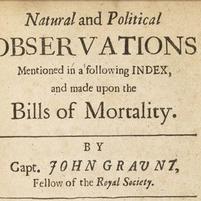As I wrote in an earlier blog for this site, one of the greatest achievements of humankind has to be that as many people as possible are living as long as possible. At least now we seem to have the evidence that more and more of us are living longer and longer lives.
Historically, there has been scepticism about the limit to longevity, moving from a belief in limits to life-span to a belief in a limit to life expectancy. In 1928, for example, it was predicted that the limit to life expectancy was around 65 years for both males and females (Dublin 1928) [1] . However, unbeknown to Dublin, these limits had already been surpassed in New Zealand. In 1990, Olshansky et al.(1990) [2] suggested “…that life expectancy should not exceed…35 years at age 50 unless major breakthroughs occur in controlling the fundamental rate of aging”. This limit was exceeded in 2014 by the Japanese population with life expectancy at age 50 reported as 35.16 (Japanese Mortality Database, National Institute of Population and Social Security Research, Tokyo).
According to Jeune (1995) [3] , centenarians did not exist before 1800 in any population or in any period of world history, an interesting claim in that his main thesis seems to have been that there are no reliable records. One could claim that this lack of evidence (in the form of birth and death records) equally does not completely dismiss the possibility of centenarians or even supercentenarians (aged 110 years or more) at any time in history and in any population. In fact, in Norway, there does seem to be evidence of a centenarian before 1800 (Kjaergaard 1995) [4]. The registration of vital events is a pre-requisite for reliable evidence, particularly about extremely long lives. The origin of vital statistics in the modern sense can be traced to an analysis of the English bills of mortality published by the father of demography John Graunt in 1662 as Natural and political observations mentioned in the following index, and made upon the bills of mortality (Sutherland 1963) [5]. Death by social class was not recorded in England until 1921 (Caselli 1991) [6]. The earliest systems of vital registration were established in Finland (1628), Denmark (1646), Norway (1685) and Sweden (1686). In England and Wales, so-called parochial registration of baptisms and burials began as early as 1538. Some years after Graunt’s work in 1662, an act was passed in 1694 providing for the registration of births and deaths throughout the country. This was, however, not widely successful and estimates of population in England and Wales in the eighteenth century have to rely on the parochial registers until the system of civil registration was established in 1836. This act, however, did not impose penalties for failure to comply and this was not addressed until 1874.
The verified oldest person ever to have lived is Jeanne Calment, who died in France in 1997 aged 122 years 164 days. The verified oldest person still alive (as of May 16th 2016) is Emma Morano of Italy – a youngster at 116 years and 170 days at the time. The oldest verified person in the United Kingdom was Charlotte Hughes, who died in 1993 aged 115 years and 228 days. The oldest living person in the United Kingdom as of May 16th 2016 was Gladys Hooper aged 113 years and 120 days. The last surviving Briton born in the 19th century was Grace Jones who died on November 14th 2014. Living in three centuries is nothing new. Margaret Neve lived in the 18th, 19th and 20th centuries (1792-1903) and is one of the earliest verified of such cases, and large proportions of those born towards the end of the 20th century will live into the 22nd century (Office for National Statistics 2012; Department for Work and Pensions 2011) [7].
But is there support for research that continues to seek out new frontiers in terms of how long we humans are able to live?
At the turn of the new millennium, Miller (2002) [8] considered the obstacles to extending life as he saw them at the time. He was puzzled by the fact that research on ageing and longevity was relegated to “an obscure and dusty corner of the research establishment” when such research has the aim and potential to prevent late-life illness and prolong active adult life. Miller cites eight reasons for this relegation of ageing research, mostly to do with the science and its deficiencies. But interestingly, he also cites a ninth obstacle which is more about ethics, and it is because of this ninth obstacle that we have to ask: “where’s the support for living longer?”
Miller argues that while research on the diseases of later life is applauded, research on ageing is seen more as a threat which would give us a world of “non-productive, chronically disabled, unhappy” older people who would of course be consuming more precious resources than they produce.
One could argue this is all part of the intergenerational conflict syndrome that is wheeled out with astonishing regularity because a world where we are enabling people to live longer and longer is a world with no room for younger people. Demographically, currently, this is hardly an issue given that populations around the world are experiencing very low levels of childbearing.
Research suggests that in Australia and the United Kingdom, for example, there is little public support for anti-ageing research (Partridge et al 2009 & 2011; Calnan et al 2005; Shepherd et al 2007) [9] with large proportions of surveyed respondents questioning the ethics of life extending therapies and even advocating the banning of such therapies. Recent Canadian research, however, suggests a different attitude in that there appears to be substantial enthusiasm for life extension in a recent national survey of Canadian adults. Almost 60% of respondents expressed a desire to live to 120 if medical advances made it possible and almost 50% actually found the possibility of increasing average Canadian life expectancy to 120 years by 2050 to be plausible (Dragojlovic 2013) [10].
If research on ageing is seen as a threat, then why is it not the case for research on the killers amongst us – cardiovascular disease, cancer – all of which are in the business of enabling survival?
Is it because we all want to live longer but none of us wants to get old?
References
[1] Dublin, L.I. (1928). Health and Wealth, Harper, New York.
[2] Olshansky, J., Carnes, B.A. & Cassel, C. (1990). In search of Methusela: estimating the upper limits to human longevity, Science, Vol. 50 (4981), pp. 634-640.
[3] Jeune, B. (1995). In search of the first centenarians. In: Jeune, B. & Vaupel, J.W., editors, Exceptional longevity: from prehistory to present, Odense Monographs on Population Ageing 2, Odense University Press.
[4] Kjaeregaard, T. (1995). Alleged Danish centenarians before 1800. In: Jeune, B. & Vaupel, J.W., editors, Exceptional longevity: from prehistory to present, Odense Monographs on Population Ageing 2, Odense University Press.
[5] Sutherland, I. (1963). John Graunt: A Tercentenary Tribute, Journal of the Royal Statistical Society, Vol. 126 (4), pp. 537-556.
[6] Caselli, G. (1991). Health Transition and Cause-specific Mortality. In: Schofield R, Reher D, Bideau A, editors, The Decline of Mortality in Europe, Oxford: Clarendon Press.
[7] Office for National Statistics 2012; Department for Work and Pensions (2011). Number of future centenarians by age group, Department for Work and Pensions, London.
[8] Miller, R.A. (2002). Extending Life: Scientific Prospects and Political Obstacles, The Millbank Quarterly, Vol. 80 (1), pp. 155-174.
[9] Partridge, B., Lucke, J., Bartlett, H., & Hall, W. (2009). Ethical, social, and personal implications of extended human lifespan identified by members of the public, Rejuvenation Research, 12, pp. 351–357. Partridge, B., Lucke, J., Bartlett, H., & Hall, W. (2011). Public attitudes towards human life extension by intervening in ageing, Journal of Aging Studies, 25, pp. 73–83. Calnan, M., Montaner, D., & Horne, R. (2005). How acceptable are innovative health-care technologies? A survey of public beliefs and attitudes in England and Wales, Social Science & Medicine, 60, pp. 1937–1948. Shepherd, R., Barnett, J., Cooper, H., Coyle, A., Moran-Ellis, J., Senior, V., et al. (2007). Towards an understanding of British public attitudes concerning human cloning, Social Science & Medicine, 65, pp. 377–392.
[10] Dragojlovic, N. (2013). Canadians’ support for radical life extension resulting from advances in regenerative medicine, Journal of Aging Studies, 27, pp. 151-158.
About the Author
Dr. George W. Leeson is Co-Director of the Oxford Institute of Population Ageing, University of Oxford.
Comments Welcome:
We welcome your comments on this or any of the Institute's blog posts. Please feel free to email comments to be posted on your behalf to administrator@ageing.ox.ac.uk or use the Disqus facility linked below.
Opinions of the blogger is their own and not endorsed by the Institute
Comments Welcome: We welcome your comments on this or any of the Institute's blog posts. Please feel free to email comments to be posted on your behalf to administrator@ageing.ox.ac.uk or use the Disqus facility linked below.













